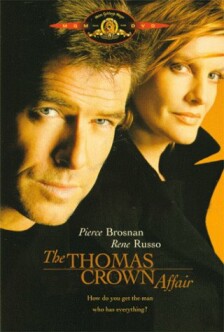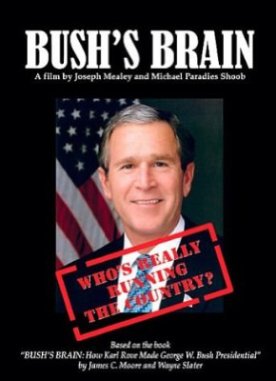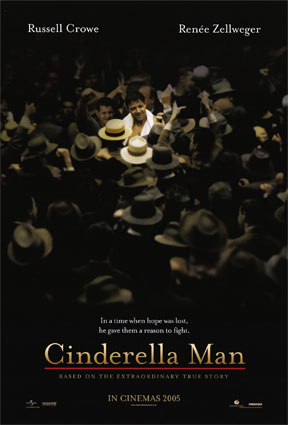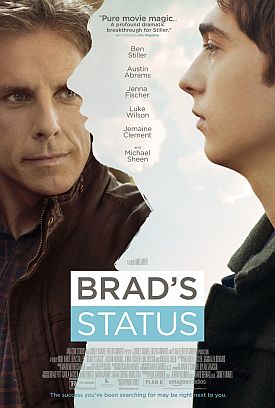Thomas Crown Affair, The
The Thomas Crown Affair, a remake by John McTiernan of the classic of
1968 which starred Steve McQueen, is what I like to call a designer movie. True,
it is also a cleverly conceived heist caper whose interesting premiss is that a
rich man, the eponymous Mr. Crown (Pierce Brosnan), in search of excitement will
turn art thief just to see if he can defeat the security system at the
Metropolitan Museum of Art — and then put the stolen painting (a Monet said
to be worth $100 million) back on the museum wall in an even more clever and
daring exercise in thumbing his nose at authority. Yet that exercise conveys
little of the excitement for which the hero presumably undertakes
it — because it is really only a part of the film’s larger purpose, which is
simply to look as cool as possible.
To some extent, this was also true of the original, as the casting of Steve
McQueen might suggest. Hollywood’s great Mr. Cool in the 1960s, McQueen
foreshadowed the movie stars of our own time, whose job is usually to strike
attitudes, like models, rather than to act — which would imply characters
who are more complete human beings than we commonly encounter in the movies. The
early James Bond films were also prefigurings of the designer movie of today,
and it is no accident that the present Bond should have been chosen to take the
McQueen role in the remake. Mr Brosnan is undoubtedly the most male-modelish of
all the stars in the 90s firmament, and so is just what is wanted here.
This is a movie which must be watched as you watch a particularly slick TV
commercial or (better) in the spirit in which you pass your eye over a glossy
magazine ad for Scotch whisky or watches or luxury cars or perfume or some
designer label of clothing. At its most dramatically convincing it rises to the
level of a music video. The love interest, Catherine Banning (Rene Russo), an
insurance investigator who is the Javert to his Valjean, knows that he stole the
painting and is willing to sleep with him to get it back. But she, too, is the
captive of cool, which wrecks the potential moral drama in which she finds
herself seduced not only by the man but by his moral outlook on the world as a
private playground.
For this is also the moral outlook of the film’s makers, and if the lovely
Catherine has any scruples to countervail against the overwhelming appeal of
elopement with her billionaire, we must simply take them for granted, for we
never see what they are. From the beginning, neither she nor we are allowed to
take in anything but pretty pictures of beautiful people doing the things rich
and leisured people do, and with a style that only money can buy. Mr Crown
sails; he glides; he dances (beautifully) with stunningly gorgeous young women
at fantastically ritzy balls. His business, like his recreations, is conducted
without tedium or failure, and even his alleged love of the Monet is really more
for the money. Art is just a particularly high-priced accessory.
In the original, the ending at least allowed for some sense of the ironies of
ambition in the case of Catherine — there played by Faye Dunaway (who
appears in the new version in a useless role as Crown’s shrink—another
accessory). The remake changes the ending and so ruins any more serious purpose
the film might otherwise have had. The real heart of this movie comes on the
morning after the couple have consummated their passion in a sex scene meant to
suggest not real feeling or intimacy but sexual champagne and caviar. As they
sit in their hotel-style white terrycloth robes at breakfast on the balcony of
Crown’s sumptuous Manhattan residence, Catherine says to him, simply, “You live
well.” And, equally simply, he thanks her. In this world it is the ultimate
compliment. But it is not a statement which can be believed, I am afraid, by
anyone whose idea of living well comes from anywhere other than a glossy
magazine.
Discover more from James Bowman
Subscribe to get the latest posts to your email.






